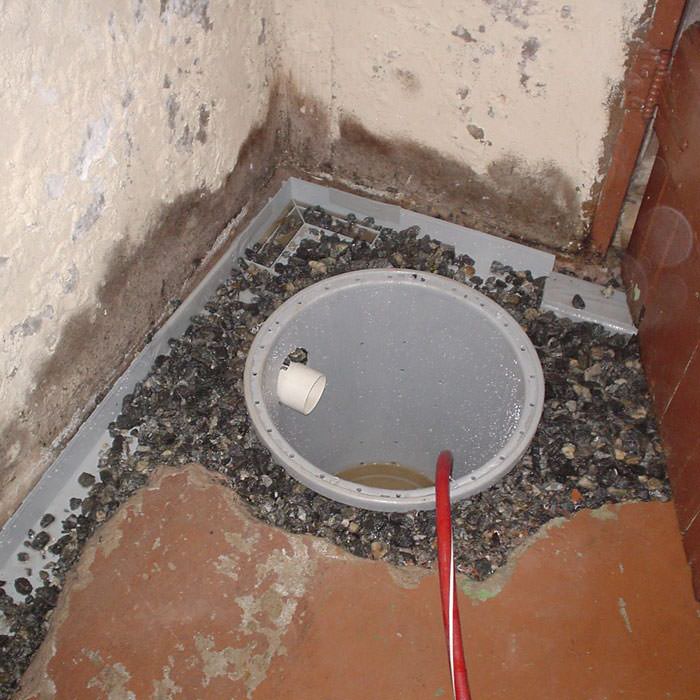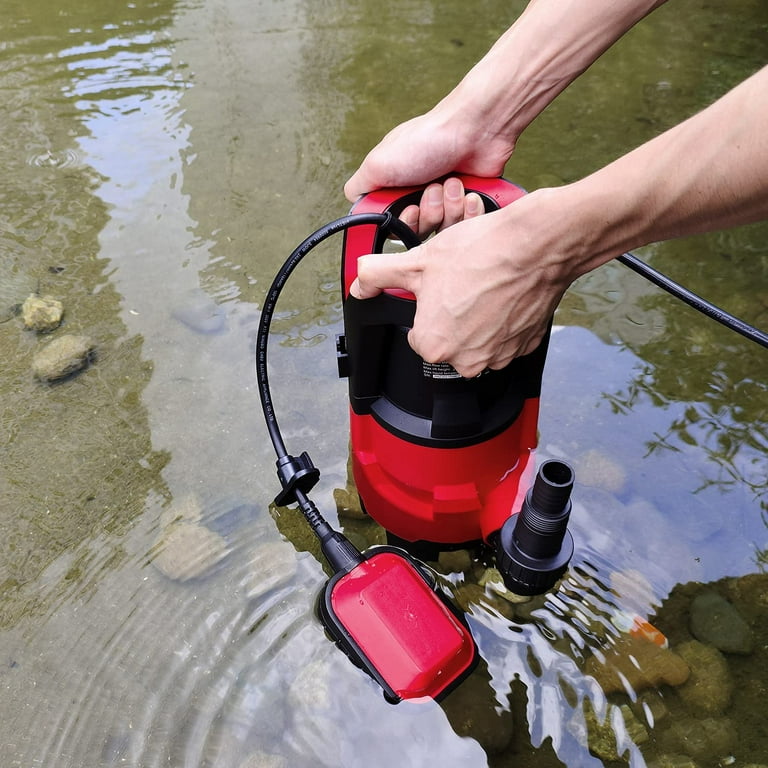Our Guide to Carefully Taking Care of a Sump Pump
Our Guide to Carefully Taking Care of a Sump Pump
Blog Article
Were you trying to locate tips concerning How To Effectively Clean A Sump Pump?

Sump pumps are crucial components in many homes, specifically in areas prone to flooding or extreme moisture. They aid stop water damage by effectively removing excess water from basements or crawl spaces. However, like any other home appliance, sump pumps call for routine upkeep to guarantee they operate successfully when required one of the most. Cleaning your sump pump is an important part of its upkeep, and understanding exactly how to do it properly can conserve you from expensive repair services and prospective catastrophes.
Intro
Keeping a tidy sump pump is vital for its appropriate functioning and durability. Disregarding this crucial task can result in clogs, malfunctions, and eventually, water damage to your property. Consequently, discovering how to cleanse a sump pump is important for property owners who rely upon these gadgets to keep their cellars dry and secured.
Indications of a Dirty Sump Pump
Recognizing when your sump pump requires cleansing is important for preventing prospective breakdowns. Some usual indicators that suggest a filthy sump pump consist of odd noises during operation, lowered water flow, and visible particles in the pit. If you discover any of these symptoms, it's necessary to clean your sump pump promptly to stay clear of any type of further concerns.
Getting ready for Cleaning
Before you start cleansing your sump pump, it's vital to take some security preventative measures. Start by shutting down the power to the pump to avoid any electrical crashes. In addition, wear proper protective equipment, such as gloves and safety glasses, to protect yourself from dirt, particles, and potential pathogens.
Recognizing the Sump Pump
Prior to diving into the cleaning procedure, it's essential to have a basic understanding of how a sump pump functions. Generally installed in a pit or container below the cellar floor, a sump pump contains a number of crucial elements, consisting of a pump, a float switch, and a discharge pipeline. When water builds up in the pit, the float switch turns on the pump, which after that pumps the water out with the discharge pipe, away from the building's foundation.
Detailed Overview to Cleaning Up a Sump Pump
Shutting down the Power
Begin by detaching the power supply to the sump pump to stop any mishaps while cleaning.
Checking for Appropriate Performance
Prior to reinstalling the pump, do a quick examination to make sure that the float button turns on the pump correctly. Pour some water right into the sump pit and observe the pump's procedure. If everything is working correctly, you can reassemble the pump and reconnect the power supply.
Removing Particles and Dirt
Use a pail or an inside story to eliminate any noticeable debris, dirt, or debris from the sump pit. Dispose of the debris correctly to stop it from blocking the pump or the discharge pipeline.
Cleaning up the Pump and Float Switch Over
Once the pit is clear of debris, thoroughly remove the pump from the pit. Evaluate the pump and the float switch for any kind of indications of damage or wear. Make use of a soft brush or cloth to clean the surface areas and eliminate any type of collected crud.
Flushing the System
After cleaning up the pump and float switch, flush the sump pit with tidy water to get rid of any kind of continuing to be dust or sediment. This will certainly aid ensure that the pump runs smoothly and efficiently.
Upkeep Tips to Keep Your Sump Pump Clean
Along with routine cleaning, there are a number of maintenance tips you can comply with to maintain your sump pump in optimal condition:
Final thought
Cleaning your sump pump is an important element of its maintenance and guarantees that it runs effectively when you require it the most. By adhering to the actions detailed in this overview and integrating regular maintenance right into your routine, you can prolong the life-span of your sump pump and secure your home from water damage.
6 STEPS ON HOW TO CLEAN A SUMP PUMP PROPERLY
UNDERSTANDING SUMP PUMPS
Your sump pump plays a crucial role in protecting your home by managing and removing excess water. It primarily functions as a “shield”, guarding your basement against the damaging effects of water accumulation. The pump is housed in a sump pit in the lowest part of your basement, and its job is to pump out any water that collects there.
During heavy rainfalls or when snow melts rapidly, water can infiltrate your basement, posing potential risks like flooding, structural damage, and harmful mold growth. Here, the sump pump springs into action, pumping out the intruding water and directing it away from your home.
SAFETY FIRST
Before cleaning, remember to prioritize safety. Disconnect the sump pump from the power source to prevent any accidental electric shocks. Also, wear sturdy gloves to protect your hands from any sharp or dirty components within the pump.
REMOVE THE SUMP PUMP
After ensuring your safety, the next step is to remove the sump pump from its pit. Doing this might require careful maneuvering as you don’t want to damage any pump components. Once removed, clean the sump pit to remove any accumulated debris or sludge.
INSPECT THE PUMP
Inspect the pump for any visible signs of wear or damage. Check the power cord, float switch, and impeller housing. If any components look worn out or damaged, consider replacing them to ensure optimal performance.
CLEAN THE PUMP
Thoroughly clean the pump with warm, soapy water. Make sure to rid it of any dirt, gravel, or other debris that might impede its performance. You can use a toothbrush to clean the small, hard-to-reach parts of the pump.
REINSTALL THE SUMP PUMP
Reinstall the pump into the sump pit Make sure it’s positioned correctly to remove the water effectively Once it’s back in place, reconnect it to the power source TEST THE PUMP
Finally, pour some water into the pit to ensure the pump works correctly. It should start automatically and begin pumping out the water; if it doesn’t, check the power source and the positioning of the pump.
Remember, while cleaning your sump pump is an essential part of home maintenance, hiring a professional plumber for a thorough inspection and cleaning at least once a year is also important. This will ensure that your pump is in optimal condition, ready to protect your home from potential water damage.
BEST PRACTICES FOR CLEANING SUMP PUMP DISCHARGE PIPES
Regular Inspection: Regularly inspect your discharge pipes, especially during heavy rainfall or snowmelt periods. Look for any signs of blockage or damage. Early detection of problems can prevent serious issues down the line. Periodic Cleaning: Over time, sediment and debris can accumulate in the discharge pipes, impeding the flow of water. Regular cleaning helps keep the pipes clear and functioning efficiently. You can use a high-pressure water jet to effectively clean the pipes. Insulation During Winter: In colder climates, discharge pipes can freeze, blocking the outflow of water. Protect your discharge pipes from freezing temperatures by insulating them with foam pipe insulation. This will ensure the sump pump can continue to discharge water even in freezing conditions. Proper Positioning: The discharge pipe should be positioned to direct water away from your home’s foundation. Improper positioning can lead to water seeping back into the basement. Ensure the pipe is long enough and angled correctly. Installation of a Check Valve: A check valve prevents water from flowing back into your sump pit after the pump has pushed it out. Installing a check valve helps maintain the efficiency of your sump pump and reduces the risk of flooding. Minimize Pipe Turns: Every curve or turn in the discharge pipe can decrease the efficiency of water flow. By minimizing turns and bends in your discharge pipe, you can increase the efficiency of your sump pump. https://www.fullspeedplumbing.com/how-to-clean-a-sump-pump-properly9999/

As a reader about Steps to Cleaning Your Sump Pump Properly, I figured sharing that excerpt was a good thing. Enjoyed reading our write-up? Please quickly share it. Let other people locate it. Thank you for being here. Return soon.
Call Today Report this page